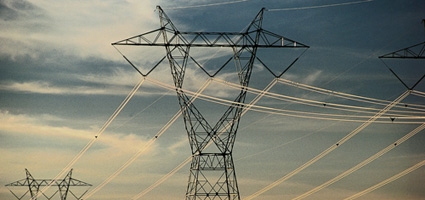Qatar is set to invest an estimated $13.1bn in power sector during the next eight years. Most of the investments will be in the transmission and distribution segments.
Qatar is one of the countries in the Gulf, where power generation has grown considerably in the last decade. Driven by high GDP growth rates and population explosion, power consumption in Qatar has increased by a compound annual growth rate (CAGR) of 9.3 percent between 2001 and 2011.
To keep pace with the demand, Qatar saw its total installed power capacity getting doubled in a span of just two years, from 2009 to 2011. As a result of this, reserve margin of electricity in Qatar stands at 40 percent despite the tremendous growth in demand. Qatar is expected to have sufficient capacity to meet the peak demand till 2017, "GCC Power 2012" released by Markaz Infrastructure Research noted.
Renewable energy in Qatar is in early stages, various viability tests and studies were conducted, however, none have so far been converted into a live project. Though, Qatar has plans to utilize solar technologies for cooling its stadia for 2022 FIFA World Cup.
According to the report, more than a dozen projects are under execution in the transmission and distribution sector of Qatar. These projects will bring a total investment around $4bn in Qatar by 2015.
The GCC countries have been making concerted efforts toward enhancing their power generation capacity to satiate the rising demand due to the growing population and economy. The power consumption across the GCC has grown at an annual rate of about 9 percent from 2002; Saudi Arabia and the UAE account for the combined 75 percent of the total GCC consumption.
The major power projects, completed across the GCC during the past decade, have now commenced operations; installed capacity has doubled from nearly 53,823MW in 2002 to almost 112,722MW in 2011-a CAGR of 9 percent. The last few years saw a massive increase in capacity as several plants in Qatar and Saudi Arabia started operations. Currently, the GCC operates with a reserve margin of about 19 percent-mainly in Qatar and Abu Dhabi-43 percent and 30 percent respectively.
The report said with the linking of Oman to GCC power grid, the interconnection grid is expected to bring in substantial cost savings. Saudi Arabia and Qatar are expected to be major players in selling power and has begun studying the possibility of linking the grid to North Africa and even to Europe. The GCC states have also begun exploring alternative sources of energy including solar power, nuclear and natural gas to boost capacity and diversify the energy mix.
Power demand is expected to grow at between 7 percent and 8 percent annually over the coming years, and the GCC countries are expected to spend $46.22bn until 2015 in order to add an additional 24,395MW of capacity.
The Peninsula
24 November
























































